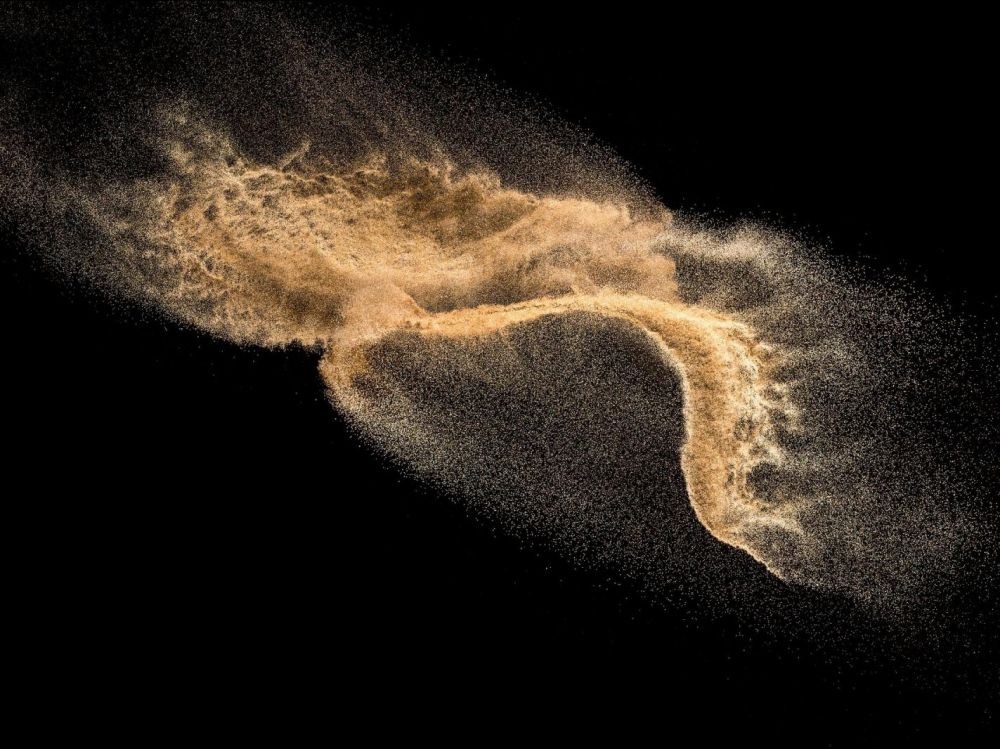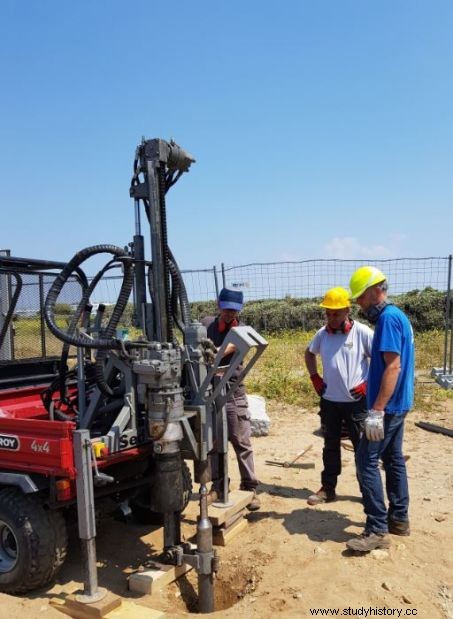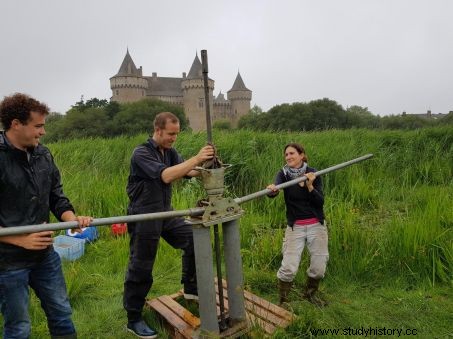Morgane Ollivier, paleogenomician at the CNRS, seeks to make the DNA of soils speak.

Tracking residues of human DNA as well as animal or plant species that have disappeared in the sediments, a new avenue of research.
There is no reason to suspect that the sediment cores brought up from the depths of Lake Iffer, in the province of Ifrane (Morocco) contain anything other than samples of muddy earth. However, these cylinders of silt taken from a depth of 6m by the team of Jean-François Berger from the University of Lyon, conceal treasures. Probable "traces" of human DNA as much as those of extinct animal or plant species that Morgane Ollivier, Lecturer at the University of Rennes-1, and attached to the Ecobio Laboratory (UMR 6553 of the CNRS), succeeded in identify. A promising feat.
The first to extract human DNA from soil
The researchers owe this new technique to paleogenetician Viviane Slon and biologist Matthias Meyer of the Max-Planck Institute for Evolutionary Anthropology in Leipzig (Germany). having extracted human DNA from soil, collected in the sediments of the Vindija cave (Croatia). But since then, Morgane Ollivier has been trying - by applying similar methods that she has optimized - to perfect this technique to find traces of our distant ancestors who disappeared in the sediments they walked on thousands of years ago. Until then, archaeologists, anthropologists and biologists had no "witnesses" to rely on other than fossil organic remains (bones, hair, teeth, traces of fire, food waste, etc.) or the presence carved tools and all other human productions fashioned by our prehistoric ancestors. But now their ancient presence can be revealed from their "fingerprints" at the molecular level alone! This is what, for example, has just been announced in the journal Science Chinese researcher Dongjiu Zhang, from the University of Lanzhou (China), by highlighting Denisovan mitochondrial DNA in layers of sediment from the karst cave of Baishiya, on the Tibetan plateau.

Sediment samples at depth on the archaeological site of Beg-er-Vil (Morbihan). © Morgane Ollivier
If genetic material can be isolated in this way, it is because of the particular resistance of DNA molecules, which can survive for thousands of years, as evolutionary geneticist Eske Willerslev determined in 2003. University of Copenhagen (Denmark) had carried out sequencing in Siberian permafrost. The urine left by a pack of wolves, for example, as well as the hair or feces deposited by a family of Homo sapiens or Neanderthals, can "speak".

Morgane Ollivier, from the Ecobio Laboratory (UMR 6553 of the CNRS), Rennes-1 University. ©CNRS
"R reconstitute all the past biodiversity of a site"
"This so-called sedimentary DNA (eDNA) will potentially allow us to reconstitute all the past biodiversity of a site" , explains Morgane Ollivier. Even there, where in the absence of material remains, a place had until then been described as having never been occupied. This amplification of data sources also contributes to providing unexpected answers to the ever-increasing number of questions concerning the impact of humans on the environment. "What influence did it have, for example, on biodiversity at the time of the Neolithic cultural transition, when human groups from the Near East to Western Europe brought with them new domesticated species? How did it go with the native animals? Did it lead to changes in the landscape? Multiplying knowledge with the contribution of data from sedimentary DNA would refine our knowledge of human migrations on an unimaginable scale , believes the young paleogenomician. These new techniques open doors to a dizzying universe !".

Sediment core drilling by Pierre Stephan, Aneta Gorczynska and Yacine Moufid on the Suscinio site, near the residence of the Dukes of Brittany, in Sarzeau (Morbihan). © Morgane Ollivier
Thus, on the Moroccan site of Ifter, the first results obtained are already very encouraging. Morgane Ollivier was able to identify - without any fossil remains - the presence of elephants, oxen, sheep, small mammals, as well as a whole cohort of plant species... and this, by simply analyzing a few milligrams sediment! But what makes her proud is to have managed to distinguish human traces! "In Iffer, I think I may have found something human!" , she says. For now, the researcher wants above all to improve the methods of bioinformatics analysis and the algorithms used to identify DNA sequences. "With two colleagues, we are trying to develop a more powerful bioinformatics methodology than the existing one" , adds the paleogenomician who also wants to develop the technique of capturing DNA strands present in the soil.
To do this, it multiplies core drilling in different regions, particularly in France, from the shell midden of Beg-er-Vil to the peat bogs of Rohu-Pargo in the Suscinio region on the Sarzeau peninsula (Morbihan). In the medium term, she also wishes to trace the Mediterranean migration routes to reconstruct the entire chronological and diachronic history, in time and space, of human migrations and their local impact on the environment. "The work of this young researcher is exhilarating , enthuses prehistorian Grégor Marchand, research director at the CNRS (UMR 6566 CReAAH). In addition to a drastic reduction in costs, new generations of DNA sequencing allow an unimaginable level of data production. Another way of questioning the living."
